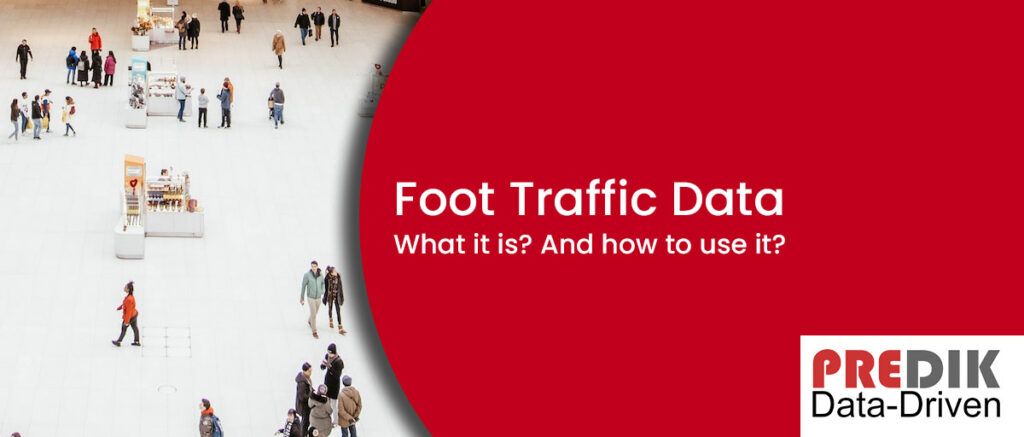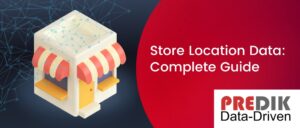Foot traffic is a vital pulse check for businesses, reflecting their performance and growth potential in an ever-changing landscape.
Businesses must comprehend and analyze foot traffic to entice customers and strengthen sales to stay competitive. This article dives into the essence of foot traffic, its significance for different types of businesses, and practical strategies to boost it.
In this article we will cover the following topics:
- What is foot traffic data?
- Why is Foot Traffic Important?
- How to find and get foot traffic data?
- Foot traffic analysis for site selection
- Using Foot traffic analysis to forecast demand
- Foot Traffic: The Pulse of Retail Performance
- Other industries that benefit from Foot Traffic
- How to increase foot traffic in retail?
- Mastering Foot Traffic Analysis: Essential Practices for Success
- In conclusion
What is foot traffic data?
Foot traffic refers to the number of users that visit a physical store, sales point, or shopping area. It is a critical metric used mainly by businesses to measure their:
- Store’s performance.
- Marketing effectiveness.
- Overall customer interest.
High foot traffic often leads to increased sales and customer engagement. In contrast, low foot traffic can be a warning sign for improving marketing and promotional efforts or changes in the store’s layout or product offerings.
“Foot traffic can help business owners understand the effectiveness of their marketing and advertising campaigns, as well as the overall health of their business.”
Fitsmallbusiness
Why is Foot Traffic Important?
Sales and Revenue
Sales teams know that the higher the visitors’ volume, the higher the chances of making sales and generating revenue.
Foot traffic directly correlates with the store’s bottom line. That’s the reason why it is so crucial to monitor and optimize it.
“Foot traffic can help businesses understand the overall health of their store and identify areas where they may need to improve. For example, if foot traffic is declining, it may be a sign that a store needs to update its marketing or improve its customer service.”
Premise
Customer Insights
Foot traffic data provides valuable insights into customer behavior and preferences, helping retailers make informed decisions about store layout, product assortment, and marketing strategies.
Brand Awareness
High foot traffic correlates with increased brand awareness and visibility as well. For example, retailers can measure foot traffic to develop loyalty programs and expand their reach.
Competitor Analysis
Monitoring foot traffic trends within an industry also allows businesses to understand their competitors’ performance and adjust their strategies accordingly.
By comparing foot traffic data against competitors, businesses can identify opportunity areas and develop targeted strategies.
- Market share: Businesses can assess their stores’ foot traffic compared to competitors in the same area to determine their market share [FitSmallBusiness].
- Demographic analysis: Decision-makers can compare a customer base against competitors’ demographics to identify untapped market segments.
- Competitive positioning: Companies can evaluate their store’s foot traffic in relation to their competitors. This is useful for identifying strengths and weaknesses.
How to find and get foot traffic data?
Accurate foot traffic tracking can give businesses valuable insights. Decision-makers who correctly find foot traffic can optimize store layouts, build effective advertising strategies, and improve customer experiences. Measuring foot traffic has become more sophisticated with advances in AI, data intelligence, and big data.
Different ways to find and get reliable foot traffic data include manual counting, anonymous mobile device tracking, video analytics, Wi-Fi and Bluetooth tracking, and mobile location.
Each method has advantages and drawbacks. Also, user privacy laws limit how companies track user behavior from different sources.
Anonymous Mobile Device Tracking Data
Mobile device tracking data, which is anonymized, provides exact insights into user behavior while avoiding using personally identifiable information. Unlike physical foot traffic solutions such as video cameras and break beams, which can only track foot traffic at exact locations or within specific areas, this kind of data offers a wider analysis scope.
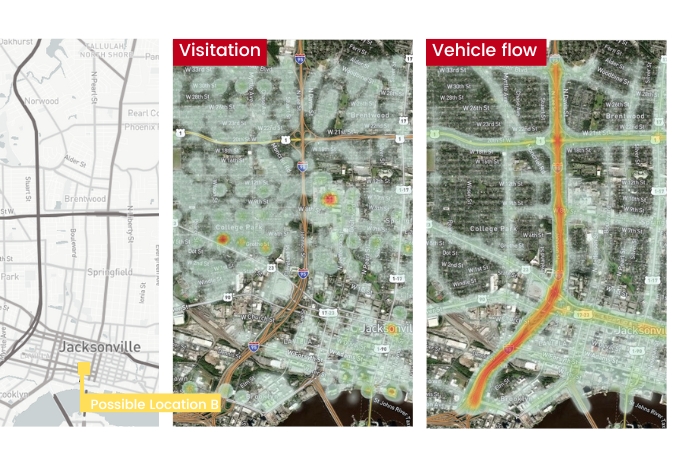
Retailers can use customers’ mobile devices (through GPS technology) to follow their movements within a physical space.
Learn more about: How Does Location Intelligence Work & Why Do You Need It?
Looking to get hig-value anonymized mobile data, contact us
People Counting Sensors
One of the most common ways to track foot traffic is by using people counting sensors.
These sensors are placed at entry and exit points. They use various technologies such as thermal imaging, infrared beams, or Wi-Fi signals to track the number of people entering and exiting a store.
Stores also use this data to analyze peak hours, customer behavior, and the “effects” of marketing campaigns on volume visits.

Mobility tracking data provides a comprehensive understanding of users’ mobility patterns, such as their movements in, out, and within a retail store (for example) and all the user movements they have agreed to share.
Also, anonymized tracking keeps customer data secure while providing valuable aggregated data.
Video Analytics
Another way to track foot traffic is through video analytics. Retailers can install special cameras to analyze user movement within a store.
This method can track customer behavior (Such as the most visited store sections).
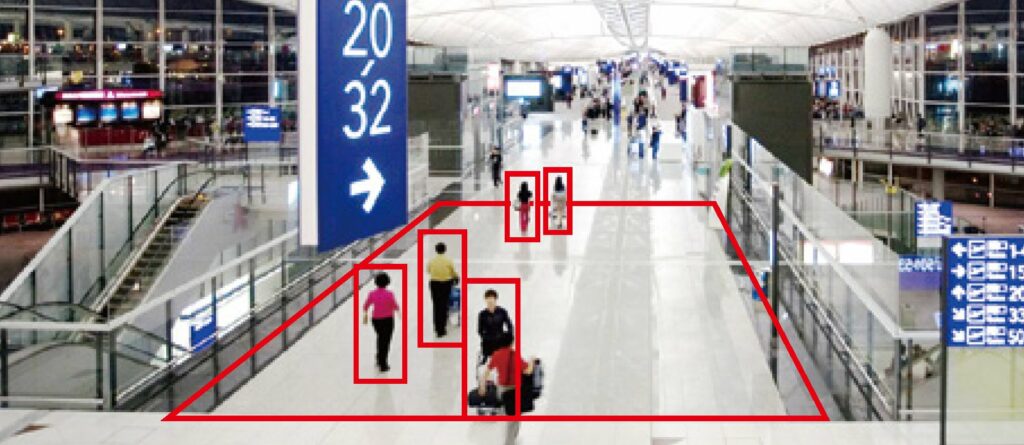
Wi-Fi Tracking
Businesses can also use Wi-Fi tracking to monitor foot traffic. This method involves capturing Wi-Fi signals from customers’ mobile devices.
Where does the data come from?
This data is collected at micro levels through WiFi and Bluetooth, while at the macro level, it’s obtained via GPS and can be collected in real time, making it more reliable and accurate when in large areas.
Other ways of getting high quality foot traffic data
There are different providers, and their data quality is based on their ability to provide a large volume of reliable data at scale.
One of them is Quadrant, and the accuracy and reliability of their data help companies understand movement patterns in specific geographic regions of interest, predict future trends and effectively mitigate risk, better understand consumer behavior and conduct profitable operations.
Foot traffic analysis for site selection
Site selection emerges as an indispensable strategic component for brick-and-mortar entities. But how can companies find the optimal location for their new physical store?
Foot traffic analysis allows retailers and real estate investors to unlock valuable insights about the best city, area, and place to allocate a new project.
Foot traffic data is useful when analyzing neighborhoods, metropolitan areas, and states, ensuring the viability and profitability of your future investments.
We also recommend you to read: The Potential of Predictive Analytics in Site Selection
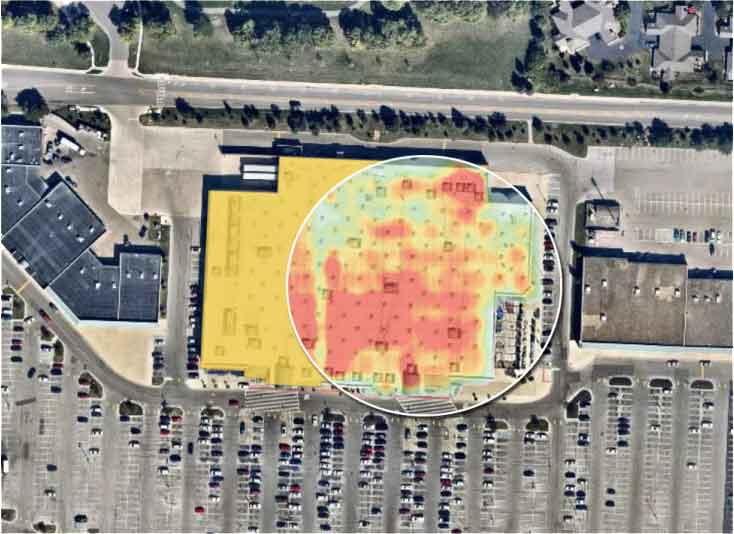
Using Foot traffic analysis to forecast demand
Having a visible correlation to revenue, mastering foot traffic data, and rapidly detecting fluctuations equips businesses with a profound understanding of their projected performance.
Decision-makers can precisely estimate revenue and demand across distinct locations through foot traffic insights. This analysis can ultimately refine supply chain optimization and facilitate strategic foresight.
Moreover, foot traffic data catalyzes wiser investment choices, supporting on-site logistics, pioneering product offerings, and laser-focused marketing campaigns that amplify any business’s competitive advantage.
You may also like to read: What is Predictive Analytics? Understanding the Basics and Beyond (With Examples)
Foot Traffic: The Pulse of Retail Performance
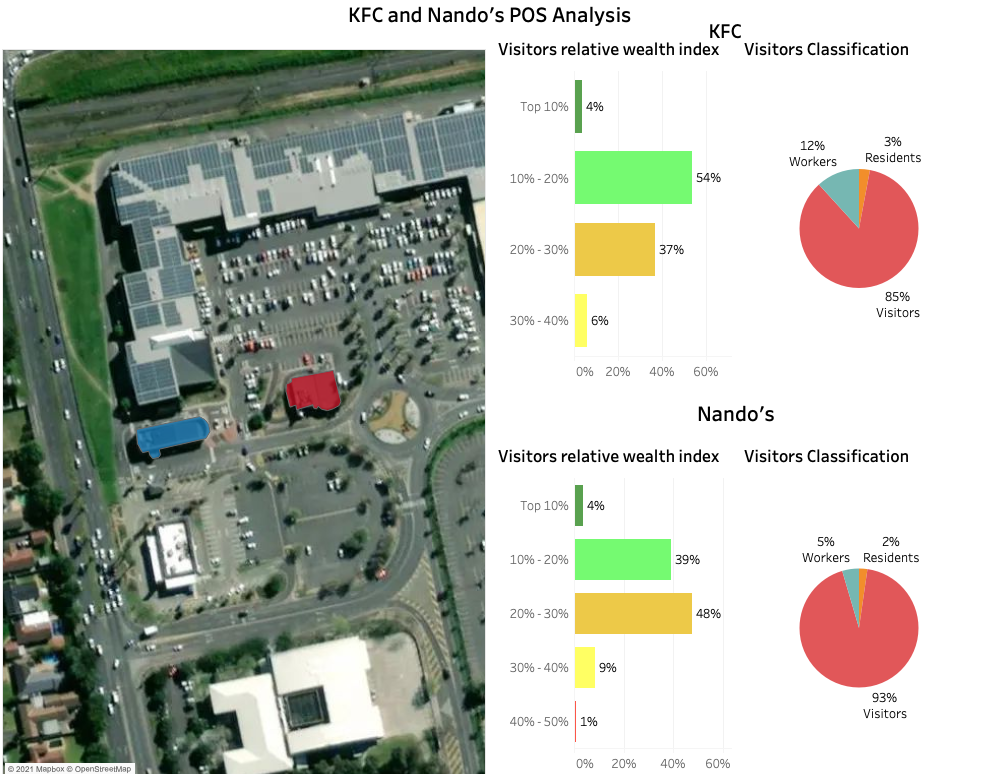
By measuring and evaluating foot traffic data, retailers can measure the effectiveness of their marketing campaigns, pinpoint customer preferences, and devise targeted strategies to drive sales.
“Foot traffic is a critical component of the retail industry, as it can help businesses measure the success of their marketing and advertising campaigns, as well as identify trends in consumer behavior.”
Investopedia
Boosting Sales and Revenue with Foot Traffic Insights
A strong correlation exists between foot traffic and sales, establishing foot traffic as a fundamental element of retail success. Retailers can improve their sales results by concentrating on strategies that draw in more customers.
Enriching Customer Experience through Foot Traffic Analysis
Foot traffic patterns offer retailers valuable insights into enhancing customer experience by identifying areas of congestion or inefficiencies within their store layout. By addressing these concerns, retailers can create a frictionless shopping experience, fostering customer satisfaction and loyalty.
Streamlining Staffing and Operations with Foot Traffic Data
Analyzing foot traffic data enables retailers to optimize staffing levels and maintain operational efficiency. By recognizing peak hours and patterns, retailers can allocate sufficient staff during busy periods and cut costs by minimizing staff presence during the slower ones.
Harnessing Data-Driven Decision-Making
Foot traffic data offers insights to guide business decisions, such as store layout, product placement, and promotional strategies.
By capitalizing on this data, retailers can make well-informed decisions that result in more effective marketing initiatives, better product offers, and increased sales.
Other industries that benefit from Foot Traffic
Insurance
Insurance providers employ foot traffic data, property data, points of interest, and meteorological data to make their risk assessments on residential and commercial properties more robust. These assessments help adjust policies and corresponding insurance premiums.
Healthcare
Healthcare facilities can also leverage human foot traffic data to improve their operations. Companies can identify underserved areas by combining foot traffic data with POI data that illustrates the distribution of healthcare providers in a city.
This information can be used to plan expansion strategies or better allocate emergency services.
Urban Developers
Urban planners can use human foot traffic data to minimize traffic congestion, identify and rectify public service gaps, and increase resource allocation to specific metropolitan areas.
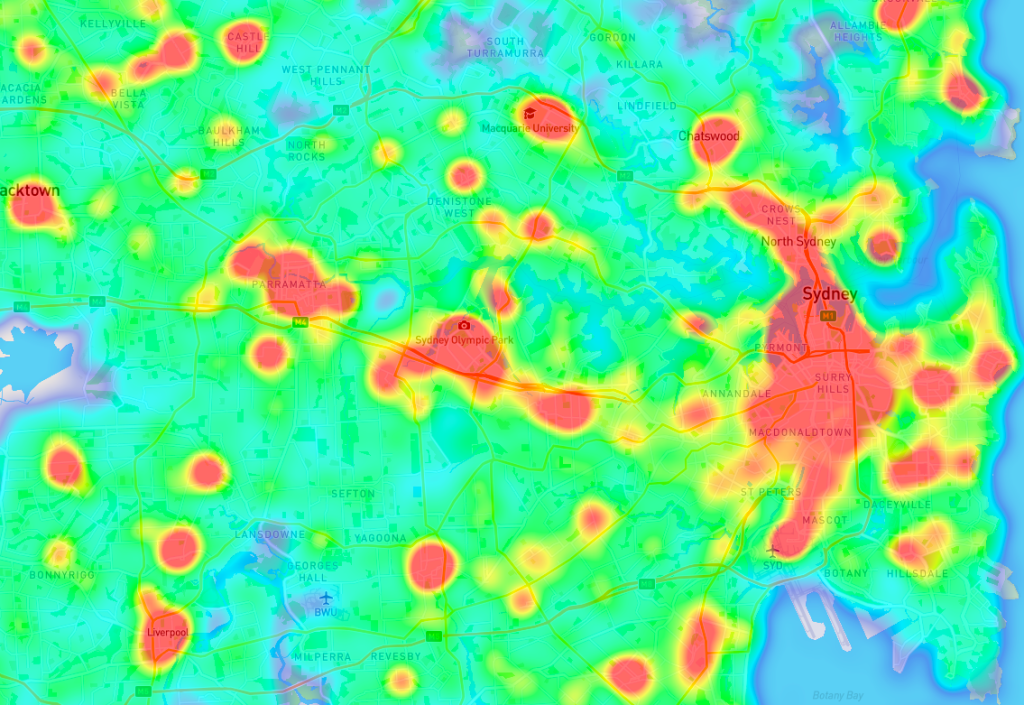
Finance and Alternative Data
Foot Traffic data allows banks, hedge funds, lending services, and financial institutions to identify trends before competitors. Also, this data serves retail finance with site selection and affluence data, among others.
Learn more about Alternative Data: What is alternative data and what sectors does it benefit?
Advertising and Marketing
Foot Traffic data enables businesses to generate cost-effective marketing investments and improve brand visibility, promote offers and events, acquire new customers, or increase visits to physical retail outlets.
Leading outdoor advertising (OOH) companies, advertising agencies, and marketing teams choose this data to make informed marketing decisions, evaluate ROI, build profitable expansion plans, and retain customers.
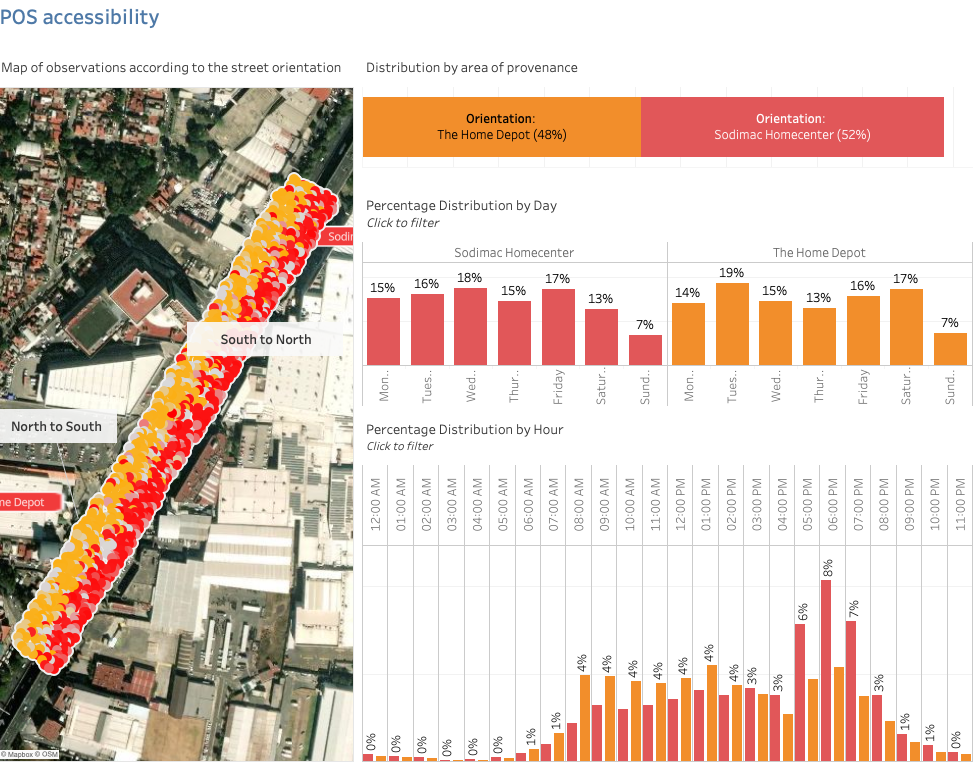
Transportation
Foot Traffic data is an integral part of the transportation and logistics industry.
Constant tracking of mobility patterns helps companies plan and manage their logistics services, such as supply chain, transportation, and fleet management.
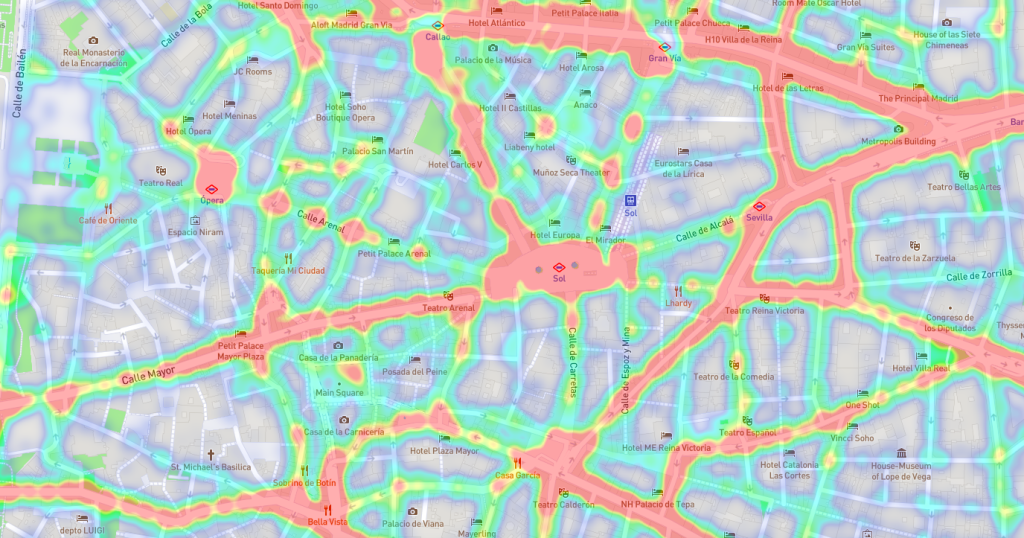
Governments
Federal governments and municipal administrations can use foot traffic data to improve public transportation systems, build more innovative urban systems and manage traffic.
On the other hand, logistics companies and transportation service providers can use mobility intelligence to improve their services and increase profits.
Travel and Tourism
By understanding how travelers interact with the commercial environments around them, businesses can measure the magnetism of places and improve business development, expansion, and customer experience.
Real Estate
Real estate companies can make better investments by studying mobility trends and patterns in a region.
Foot traffic data is valuable to architects, urban planners, and investors for decision-making in residential, retail, commercial, and even industrial projects.
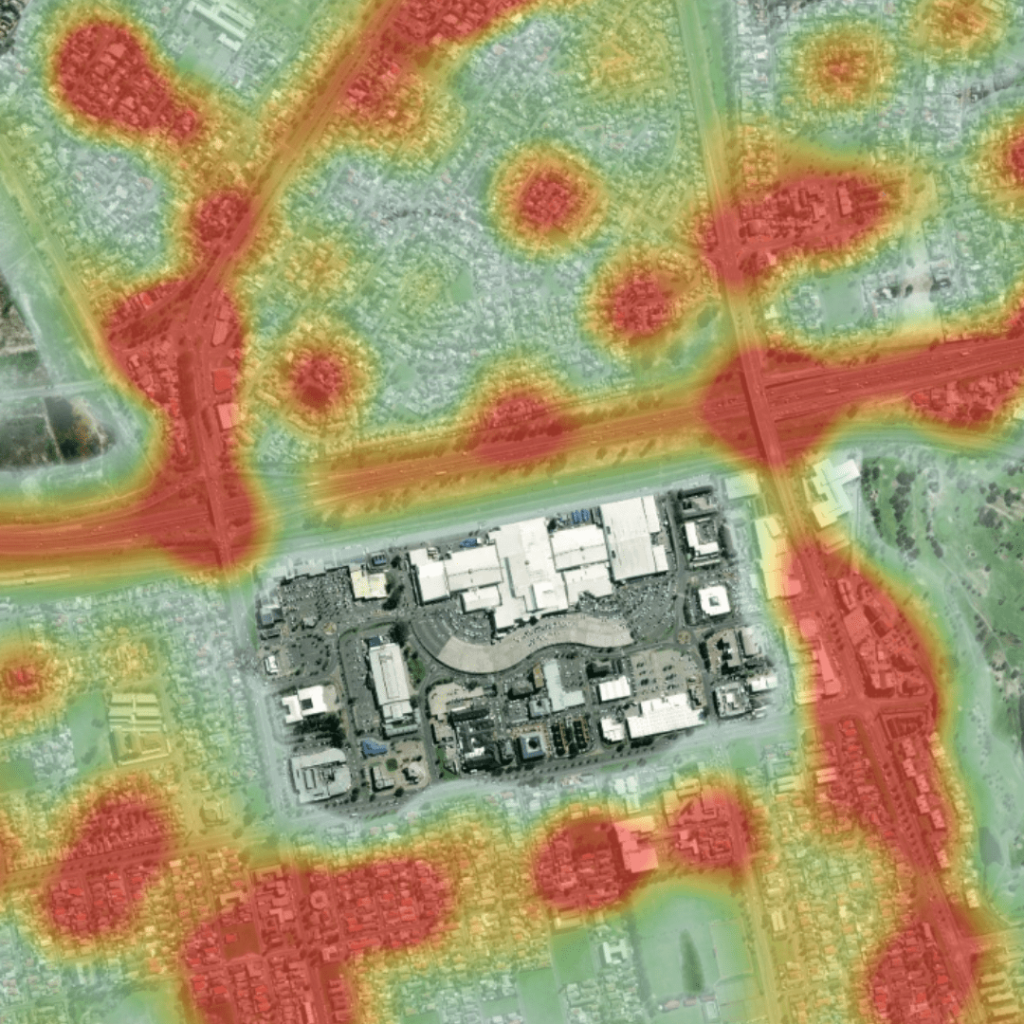
How to increase foot traffic in retail?
To increase foot traffic in a retail store, you must consider key factors like location, seasonality, store appearance, store layout, competitor activity, and commercial activity, among others.
Location and Accessibility: The Cornerstone of Success
Location is considered the most crucial factor in foot traffic. A prime location in high-traffic areas, such as bustling shopping malls, lively streets, or popular tourist destinations, increases the likelihood of capturing more customers.
Equally important is accessibility; customers are more likely to patronize stores that are easily reachable through various transportation modes, including public transit, biking, or walking.
Store Appearance and Ambiance: Crafting a Memorable Experience
A store’s appearance and ambiance are essential in attracting customers and encouraging them to stay. A well-maintained exterior and a clean and visually engaging interior leave a lasting impression on potential customers.
Factors such as lighting, music, and scent can profoundly impact a store’s ambiance, influencing customer emotions and shopping behaviors.
Customer Service and Staff: The Human Touch That Makes a Difference
Outstanding customer service is instrumental in attracting and retaining customers and fostering a memorable shopping experience. Knowledgeable, friendly, and attentive staff encourage customers to spend more time in the store and increase the likelihood of purchases.
Product Variety and Pricing: Meeting Diverse Needs and Expectations
Product offers, display, and pricing can directly impact foot traffic. Brands must match their offer with consumers’ needs to increase visit volume.
Competitive pricing is also key. Customers are constantly comparing prices, seeking the best deals. Offering unique and exclusive products can differentiate a store from competitors and entice customers to visit.
Competitor Presence and Commercial Activity within an Area
The presence of competitors and the availability of nearby attractions can also affect how much a business can increase its foot traffic. For example, it’s possible to experience increased foot traffic when a direct competitor is running a promotion or when a local event is happening nearby.
Marketing and Promotions: Captivating Customers and Driving Traffic
Effective marketing and promotional strategies can dramatically boost foot traffic.
Businesses should leverage various channels, such as social media, email marketing, and local advertising, to generate awareness and drive traffic. Moreover, in-store promotions, including discounts, loyalty programs, and special events, can attract customers and encourage repeat visits.
Mastering Foot Traffic Analysis: Essential Practices for Success
The Power of Comparison: Evaluating foot traffic data across various potential sites is crucial. By comparing and contrasting, businesses can spot the best location opportunities.
Stay Ahead with Trend Tracking: Keep a keen eye on foot traffic trends as they evolve over time.
Unleash the Full Potential of Data: A holistic approach to site selection combines foot traffic data with other key metrics, such as demographic insights and competitive analysis.
This enriched perspective will ensure informed decisions.
In conclusion
As the article highlights, foot traffic data is a vital tool for businesses seeking to optimize their operations and stay ahead in today’s fast-paced market.
By utilizing cutting-edge technologies such as Wi-Fi tracking, mobile apps, and beacons, businesses can obtain valuable insights into consumer behavior and make data-driven decisions that enhance the customer experience and drive revenue growth.
It’s important to note that ethical data collection practices and compliance with relevant regulations are critical aspects of using foot traffic data effectively. This is why businesses should prioritize these practices to protect consumer privacy.
Overall, foot traffic data offers valuable insights for businesses seeking to gain a competitive edge and succeed in the marketplace.
At PREDIK Data-Driven we use raw foot traffic data, and enrich it with different types of alternative data, in order to generate solutions based on accurate information and maximize the profitability of any type of business.

